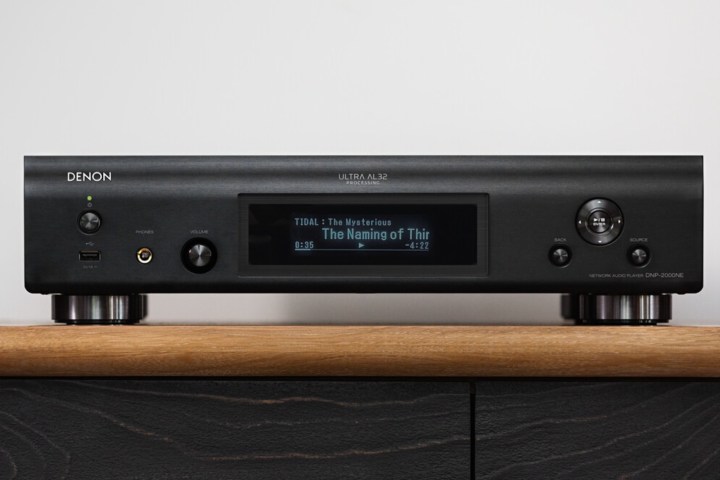Denon’s newest network media player, the DNP-2000NE, comes with several handy improvements, like the ability to connect it directly to your TV via HDMI ARC. While these improvements are welcome, what’s a lot less exciting is the price. The DNP-2000NE is $1,599, a massive increase over its predecessor, the DNP-800NE, which Denon launched in 2018 for just $599.

Visually, the DNP-2000NE and 800NE appear to be nearly identical, with a graphic display on the front, accompanied by volume, source, and playback controls, plus a USB port and a headphone jack. You’ll find the biggest changes on the back panel. Where the 800NE was restricted to a conservative group of output ports (fixed and variable analog, and digital optical), the 2000NE is awash in ports: the same analog offering, plus two optical inputs, a coaxial digital input, an optical and coaxial digital output, a USB-DAC input for computer connections, and that HDMI ARC input we mentioned earlier.
The HDMI ARC connection lets the DNP-2000NE display album art and song information on the TV, while the TV’s remote can be used to control the 2000NE’s volume. Under the hood, Denon has upgraded its sound processing with the newer Ultra AL32 Processing Plus and DAC Master Clock design. Instead of 800NE’s single digital-to-analog converter (DAC), the 2000NE now runs a quad DAC configuration.

But beyond these changes, a lot remains the same. An Ethernet port supports wired networking, Wi-Fi and Bluetooth are your wireless streaming options, the player is compatible with Denon’s HEOS software for multiroom music control, and it works with both AirPlay 2 and DLNA devices. If you want voice assistant control, the HEOS software is compatible with both Amazon Alexa and Google Assistant, while Siri control can be added using the Apple Home app.
There’s excellent support for a variety of lossless, hi-res file formats up to 24-bit/192kHz including FLAC, ALAC, and WAV, native DSD support up to 5.6MHz, and lossy formats like AAC, MP3, and WMA. The one format that’s missing is MQA, which means that until Tidal adds hi-res lossless FLAC files to its library as it has promised to do, you’ll be limited to Tidal streaming at CD-quality 16-bit/44.1 kHz.
Like the 800NE before it, the DNP-2000NE has been designed to mate well with Denon’s current models of matching components: a 2-channel stereo amplifier (PMA-1700NE) and a CD/SACD player (DCD-1700NE).
Has Denon added $1,000 worth of upgrades to the DNP-2000NE over the 800NE? That will largely depend on how you want to use it. If you’re strictly looking to add streaming capabilities to an existing system, and that system already has a DAC that you’re happy with, the DNP-2000NE is probably overkill. But for those who want the ultimate in streaming flexibility and control, it’s hard to argue that the 2000NE leaves much on the table.
Editors' Recommendations
- Tidal launches Circles, a social network for musicians
- Cambridge Audio hopes for another hit with its new CXN100 network streamer
- What is a network music streamer and why do you need one?
- What is Spotify? Music, pricing, and features explained
- What is Pandora? Music, features and pricing explained




